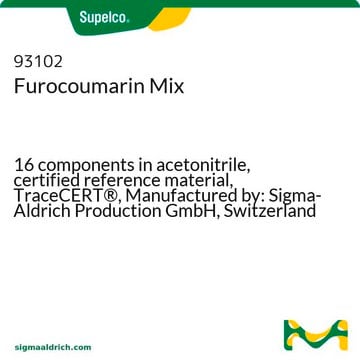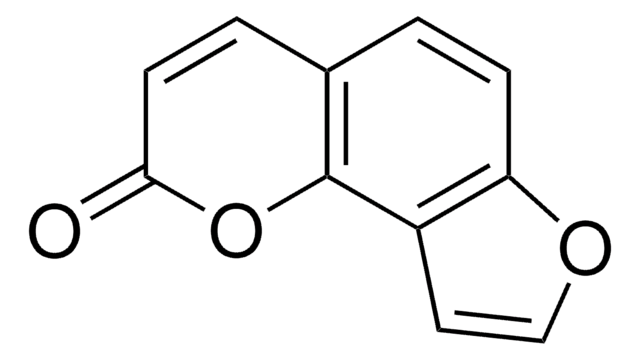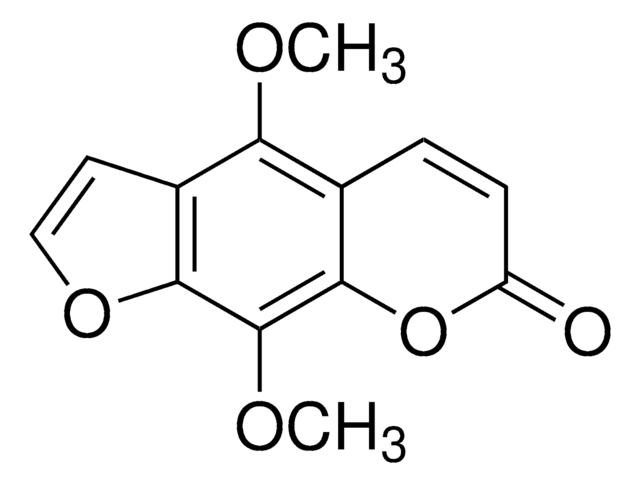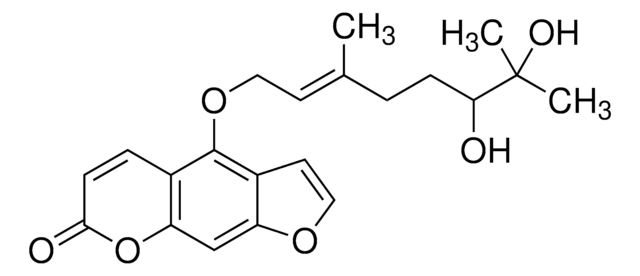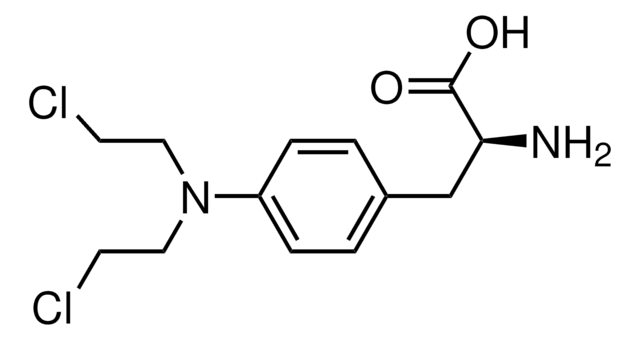A0956
Angelicin
Sinónimos:
2-Oxo-(2H)-furo(2,3-h)-1-benzopyran, 2H-Furo[2,3-h]-1-benzopyran-2-one, Isopsoralen, NSC 404563
About This Item
Productos recomendados
form
powder
Quality Level
storage temp.
2-8°C
SMILES string
O=C1Oc2c(C=C1)ccc3occc23
InChI
1S/C11H6O3/c12-10-4-2-7-1-3-9-8(5-6-13-9)11(7)14-10/h1-6H
InChI key
XDROKJSWHURZGO-UHFFFAOYSA-N
¿Está buscando productos similares? Visita Guía de comparación de productos
Application
Biochem/physiol Actions
signalword
Warning
hcodes
Hazard Classifications
Acute Tox. 4 Oral - Eye Irrit. 2 - Skin Irrit. 2 - STOT SE 3
target_organs
Respiratory system
Storage Class
11 - Combustible Solids
wgk_germany
WGK 3
flash_point_f
Not applicable
flash_point_c
Not applicable
ppe
Eyeshields, Faceshields, Gloves, type P3 (EN 143) respirator cartridges
Certificados de análisis (COA)
Busque Certificados de análisis (COA) introduciendo el número de lote del producto. Los números de lote se encuentran en la etiqueta del producto después de las palabras «Lot» o «Batch»
¿Ya tiene este producto?
Encuentre la documentación para los productos que ha comprado recientemente en la Biblioteca de documentos.
Los clientes también vieron
Artículos
DNA damage and repair mechanism is vital for maintaining DNA integrity. Damage to cellular DNA is involved in mutagenesis, the development of cancer among others.
Nuestro equipo de científicos tiene experiencia en todas las áreas de investigación: Ciencias de la vida, Ciencia de los materiales, Síntesis química, Cromatografía, Analítica y muchas otras.
Póngase en contacto con el Servicio técnico
